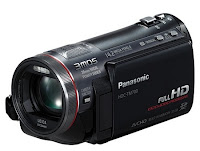I've used several types of media and software in the planning and creation of my film, aswell as new equipment: it's been a very enriching experience thats brought many forms of media to my attention and how to use them successfully has become an easy practice. The largest challenge was probably Final Cut ProX, which I've been using constantly to create the actual film, ident, storyboards etc. However after exploring Final Cut ProX and learning how to use it properly, I then felt I could then move on to the range of other programmes.
Adobe Software (Illustrator & Photoshop)
- I used these programmes to crop and edit the storyboard and the ident stop-motion pictures
- I had to edit contrasts, crop and blur out mistakes in some pictures which took a basic knowledge in these programs
- I'd never used Adobe software before so the whole concept was new to me
Final Cut ProX
- The program is relatively self-explanatory but has a huge variety of hidden talents and features that can only be found through playing on the program or taking tutorials
- For example you can shorten the length of selected clips to a certain time by command D, then typing in your desired time
- I had to use this program more than others for extended periods of time to create the various videos required over the course
- The program also takes almost all file types so it's very easy to cut footage together effectively, which is one the things I was worried about
Camera: Panasonic 1080p HD
- The camera itself is simple to use, there are a few basic rules which took a while to remember such as never press the 1080p button as it makes the format incompatible
- Fortunately because the camera runs on an SD card, no awkward tapes were needed, the card holds far more film, is more compact and allows far quicker download to computer
- The camera is excellent quality but requires an eye for shots, especially when using the zoom and manual focus
- Because my film is very stylised, it was not easy to get the shots I wanted because it was raining on location and we only had a small umbrella to protect the camera
- The stylised shots I wanted were created through the angle of the camera and its movement, a lot of the work was handheld because it made the footage feel more claustrophobic
- The camera quality changes significantly in the light and also looks very different on the camera screen compared to the computer therefore judging the appropriate lighting to use and time of day to film is very hard, this must also be considered in location
- I managed to find a location that was gloomy at night but had some dim street-lamps that I could add fillers to

Survey Monkey
- To complete some of my evaluation and audience feedback I used survey monkey, which is an excellent membership free website
- I learned that using online surveys is a far more effective way of working because you can view all the results in a collated form in charts and graphs as soon as a survey is filled out, there is no calculation to be done on your part
- This makes the website very efficient and easy to use
Other Equipment
- Using battery lighting was challenging because you only have 30mins of life in each light so I had to use my time very wisely with a clear schedule to get everything filmed in the short time
- The tripod also had to always be leveled when filming using the level to assure the camera was centered

No comments:
Post a Comment